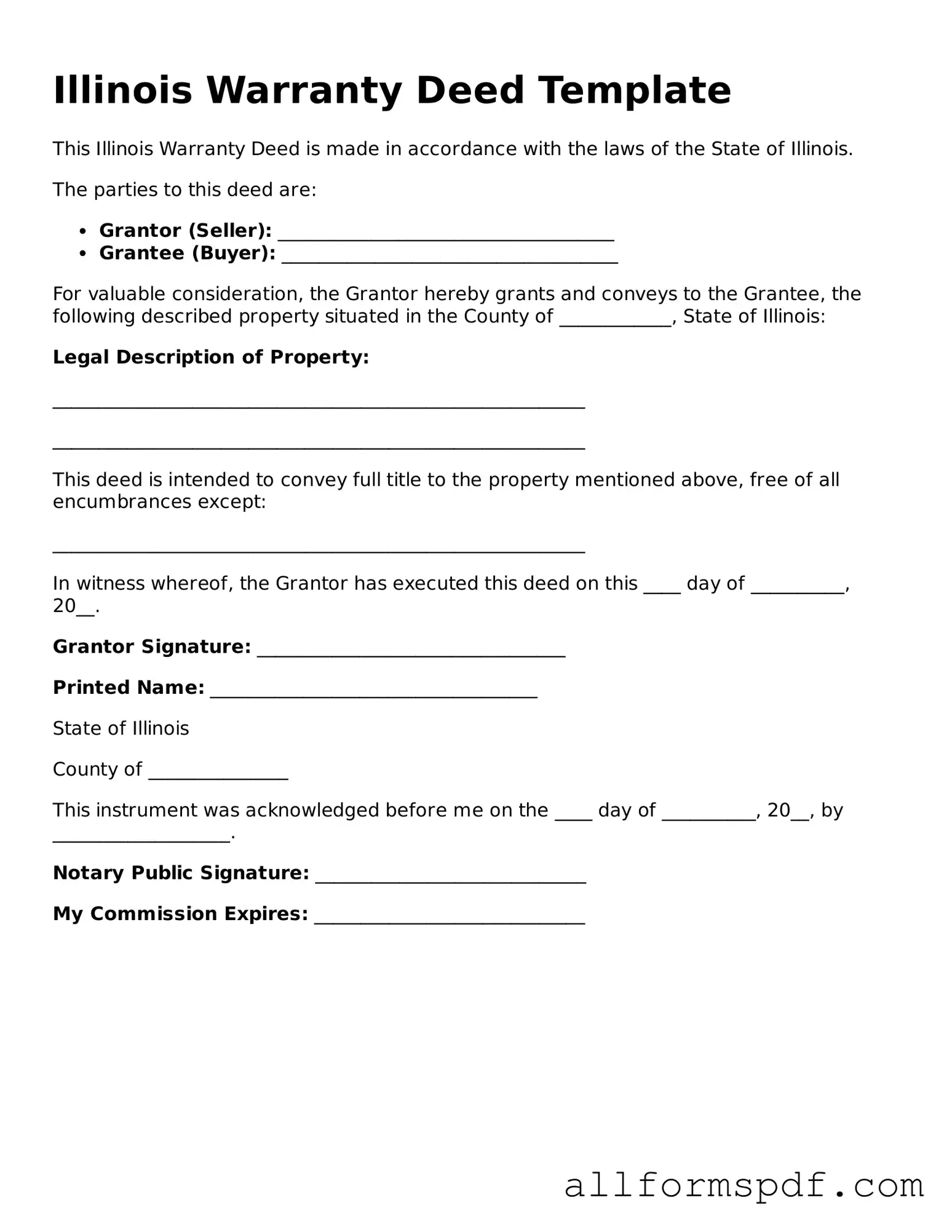Fillable Deed Form for Illinois
A deed form in Illinois serves as a legal document that transfers ownership of real property from one party to another. This essential tool ensures that the transaction is documented properly, providing clarity and security for both the buyer and the seller. Understanding the specifics of the Illinois deed form is crucial for anyone involved in real estate transactions within the state.
Create My Deed Now
